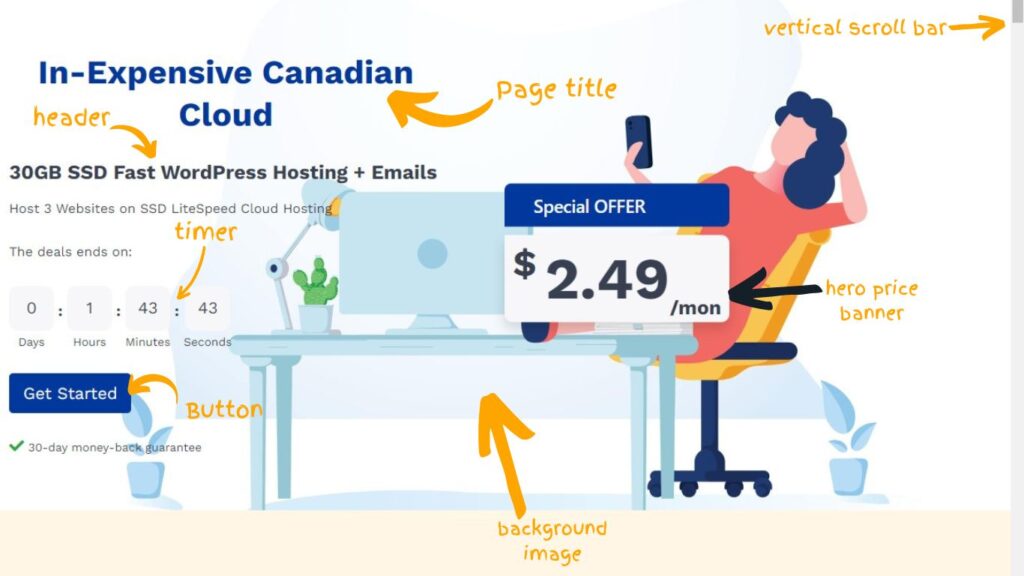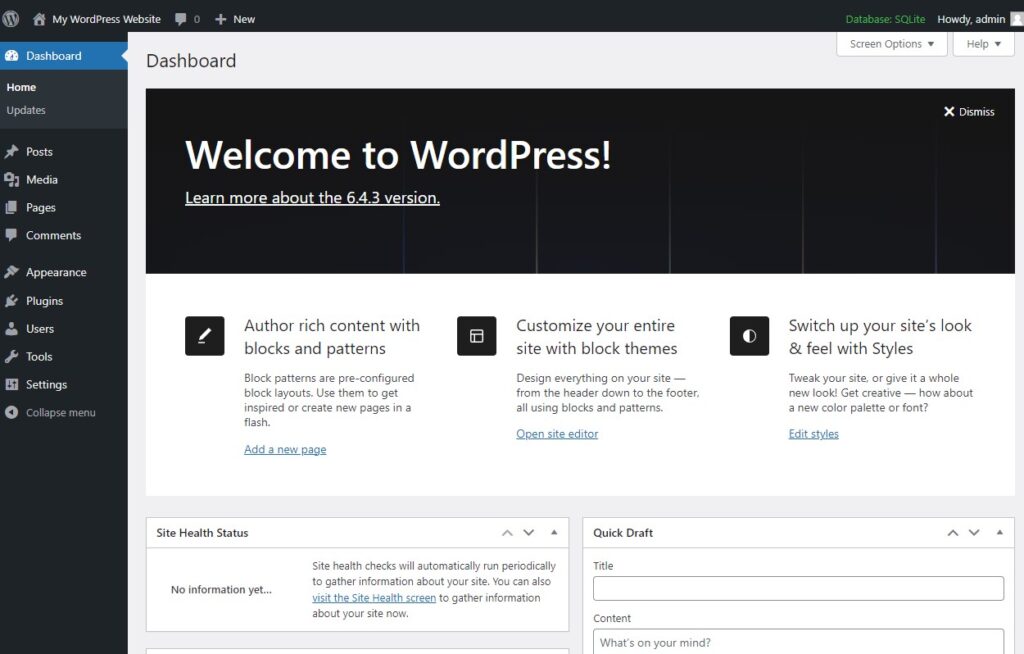Many would-be online entrepreneurs get discouraged when they think about website design and development. We’re here to show you that you can start a profitable website cheaply and easily, no matter your skill level.
A website doesn’t have to be beautiful or complex to make lots of money. In fact, some of the most profitable websites in the world are quite unimpressive.
Think about it. Amazon.com isn’t pretty, but it brought in $574 billion in 2023. Craigslist is terrible, yet it brought in $694.0M in 2023. And let’s not even talk about Berkshire Hathaway or the Yale School of Art.
If you want to start a website for e-commerce, blogging, or a portfolio, you don’t need to spend months and thousands of dollars on it. You just need to get a domain name, buy a hosting plan, and start building.
This five-part beginner’s guide covers website design and development basics. To start with, we’ll help you understand what a website is, how it works, and how to start one with WordPress or Olitt.
Websites and URLs Explained
The definition of a website is a set of related web pages that share a domain name and can be accessed online using an internet browser.
Web pages are structured documents that display information, each page having a unique web address. They can contain text, links, images, videos, interactive content, or a combination of all those.
There are different types of web pages on a website. Examples include the main homepage, service pages, contact pages, blog posts, landing pages, service/product pages, and about-us pages.
Each web page can contain many different elements. Common examples are search bars, graphics, videos, navigation bar, headers, footers, subheadings, body content, buttons, and more. See the example below of the Truehost homepage.

Web pages can be static (read-only), or dynamic. However, most pages allow a degree of user interaction, such as entering login information or clicking a button. Others, like OpenAI’s ChatGPT website, can run complex algorithms in the background and return the results through your browser.
Fun fact: Most websites are publicly accessible, but you can also keep a site private and hidden from search engines. Such a site can only be accessed by typing its unique URL in a web browser. For more privacy and security, you can add a login page. Such “invisible” websites are part of the deep web.
What is a website made of?
A websites is made up many individual but related web pages.
Each web page is built using a special language called Hypertext Markup Language (HTML). All website data, including text, images, videos, and tables, are stored in files. Collectively, all these files in different formats make a website database.
Website files are stored (the technical word is “hosted”) on a special computer called a server. When a client computer requests access to the site, it is served special files over an internet connection. A web browser interprets the instructions in the files and displays the content on a screen.
Server response speed is very important when it comes to website load speed. That’s why it is crucial to host your website with the right cloud hosting provider to ensure optimum website performance and user satisfaction.
Here’s more information on website hosting companies in Canada and how to make sure you have the right one.
What is a URL?
To differentiate each webpage and website from the other 1.8 billion sites, we use unique uniform resource locators (URLs). A URL is like an internet address consisting of a scheme, a domain, and a sub-domain (extension).
The image shown below shows the parts of a URL.

A URL can also contain other parts such as:
- A port number, which is a virtual connection point for digital communication. For example, Port 443 is for HTTPS (secure) connections, while Port 80 is for HTTP (insecure) communication
- A URL path, which is the location of a resource, file, or webpage on a website. E.g., https://truehost.ph/how-bloggers-in-the-philippines-make-money/. The red part of the link is the path to one of our blog posts
- Query – some URLs contain a question mark, which means your browser is requesting some data. The parameters (values) of that data come after the question mark. For example, if you conduct a Google search for the Truehost affiliate program, the URL may look like this: https://www.google.com/search?q=truehost%20affiliate
- File formats, like .aspx or .php may also show up in a URL. They tell the browser how to process that web page. Examples are the Truehost affiliate registration page (https://truehost.ph/cloud//register.php) and the DMCA takedown page (https://www.dmca.com/Takedowns/DIY.aspx); in both cases the webpage contains a script that allows the user to interact with it
These are just examples to show what a URL is and how it works. As you can see, a URL is a unique name that points to your website, and each page on the website has a unique extension of that domain name.
A domain name can be different from a website name. If you’re yet to come up with a good domain name for your website, follow our business name guide.
Although we humans use domain names, computers identify websites using IP addresses. URLs are converted into IP addresses through a complex DNS system, which we will cover later in this guide.
How to Make a Website
The easiest way to create and launch a website is to use a website builder like Olitt or Wix.
A website builder uses pre-built templates that you can edit easily by moving different elements around. You can also add content directly on the site, with no coding knowledge required.
Website builders also simplify website hosting and domain management for beginners. Rather than having to manage ten different things, website builders allow you to bundle everything you need for your website into one neat package.
However, if you prefer to build a website manually without having to code it from scratch, use WordPress.

WordPress is an open-source content management system (CMS) that allows you to build website pages and publish content without having to learn how to code.
You can get comfortable with using WordPress in days. If you’re not sure how it works, use the WordPress playground to mess around with the platform before building a real site.
The difference between WordPress and website builders is that WordPress gives you almost unlimited customization options, but it takes time to learn. On the other hand, website builders are very easy to use, but offer less flexibility.
How to make a WordPress website
Launching a WordPress website involves several steps:
- Find and register a domain name for your site.
- Buy website hosting.
- Register your domain with the hosting service provider.
- Use the cPanel logins provided by the hosting company to access your control panel.
- Use a WordPress auto-installer (click the WordPress logo) for easy installation; however, some hosting companies preinstall WordPress for you.
- If these fail, download and install WordPress manually; here’s a handy guide.
- Use the WordPress login page to access the dashboard by typing your site URL and adding /wp-admin.
- Choose a WordPress theme (free or premium).
- Start customizing your site and publish some content.
Truehost is one of the best WordPress hosting companies in Canada. We offer tailored solutions for WordPress sites that help you maximize site speed, SEO, site stability, and security.
Plus, our technical support is always ready to help you any difficulties you may encounter when establishing your site.
WordPress vs Olitt: Which Is Best?
Deciding to use WordPress or a drag-and-drop website builder like Olitt is a personal choice. If you’re wondering how to make a website, you should probably use Olitt.
We recommend Olitt because it lets you build beautiful websites out-of-the-box even if you have no technical skils. However, if you want a website where you can customize everything down to the code, use WordPress.
Whichever builder you choose, Truehost is committed to helping you actualize your dreams and find success online.